Ever had a manager you knew you'd never forget?
The kind that was– or is– so awesome, you count yourself lucky just to work with them? The type of manager that helps make coming to work a meaningful, satisfying, and productive experience?
We've talked a lot about the styles of managing and the qualities of a good manager on the Lighthouse blog. As a manager and leader, you work tirelessly to improve and learn how to lead your team better.
But what qualities do employees love to see most in their managers? More importantly, what qualities make employees love coming to work (and stay there long-term), maximizing both engagement and productivity in the process?
The most common types of managers and management styles - a quick primer
There are a number of ways to categorize managers based on their leadership style. In 2000, Daniel Goleman, the author of Primal Leadership, Unleashing the Power of Emotional Intelligence, came up with a way to group leaders building on the work of renowned psychologists Douglas McGregor and Abraham Maslow.
Maslow is famous for developing his “Hierarchy of Needs”, which explains what motivates and drives people in different situations.

Meanwhile, McGregor, a former MIT professor and author of the book The Human Side of Enterprise, is one of the pioneers of the idea you need to use more than authority to motivate your team.
As he puts it:
“The power to influence others is not a function of the amount of authority one can exert. It is a mistaken idea that the effectiveness of the group depends solely on upon the leader.”
In his book, McGregor stresses the importance of teamwork, psychological safety, and constructive feedback and disagreements.
Goleman's management styles
Inspired by their work, Goleman defined six management styles that followed or missed out on those key areas:
- Coercive - a style where the manager makes all the decisions and discourages his team from bringing constructive feedback or ideas to the table. You might call them bossy.
- Pacesetting - where a leader raises the bar for their team by setting an example of high performance and holds their team accountable to it, replacing them if they cannot meet that standard.
- Democratic - also called consultative, or participative, these leaders encourage their team to share their opinions and include them in their decision-making.
- Visionary - use a shared, ambitious goal to motivate their teams. Instead of using fear, they motivate people by showing them how they can contribute to the big goal.
- Coaching - this leadership style focuses on using feedback and praise to improve each person on their team. They motivate their team primarily through helping them grow.
- Affiliative - this style focuses on building inner-team rapport, conflict resolution, and working on soft skills. It nurtures a culture of positivity and psychological safety.
And we’ll add one more, which isn’t in Goleman’s book, but is a common leadership style for especially small startup teams (coined by American psychologist Kurt Lewin):
- Laissez-faire* - meaning “let do” in French. These leaders give team members full autonomy to do what they feel is best.
Choose the style you want to live out wisely, because what you do as a manager impacts the results you get from your team. As we’ll see in the next section, your actions will significantly impact turnover, team happiness, and much more.

A great manager positively impacts everything
As a manager, you have the ability to create a great (or terrible) environment for your team. You can influence everything from employee turnover to your team's engagement and productivity.
In 2021, research from MHA found that a lack of support from management is one of the primary reasons for employee dissatisfaction and turnover.
Meanwhile, in Gallup's study of managers, they found that, "the manager accounts for at least 70% of the variance in employee engagement.”
There are countless different types of managers in business; some that bring their employees up, and some down. Luckily, there are some key habits you can adopt regardless of which one of Goleman’s styles you fit most into or how you approach leadership.
Today, we’ll review 4 leadership styles you can adopt to make a positive difference on your team.
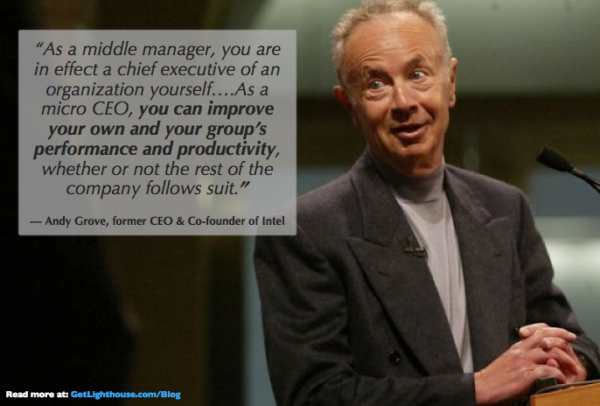
What type of manager do you want to be? 4 Types of managers employees love to work for
While every employee is unique, there are habits and behaviors that all employees appreciate and respond to. They're what makes everyone enjoy coming to work each day, and helps teams thrive.
Today, we look at what those 4 qualities and types of managers are so you can bring them to your team, too.
Table of Contents - What kind of manager do you want to be?
- Managers who appreciate their employees and their work
- Managers who are open to feedback
- Managers who show they care
- Managers who invest in their employees' growth
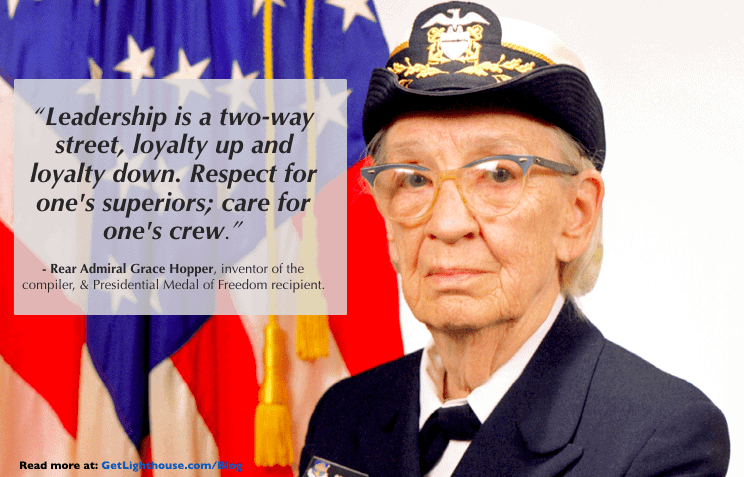
1) Managers who appreciate their employees and their work
Employees love managers who appreciate them and their work.
Outside of the obvious promotion, recognition is one of the most important ways to show your employees that you care about them, their progress, and the work they're doing.
Consultancy firm Towers Watson found that recognition from an employee's manager increases engagement by nearly 60%:
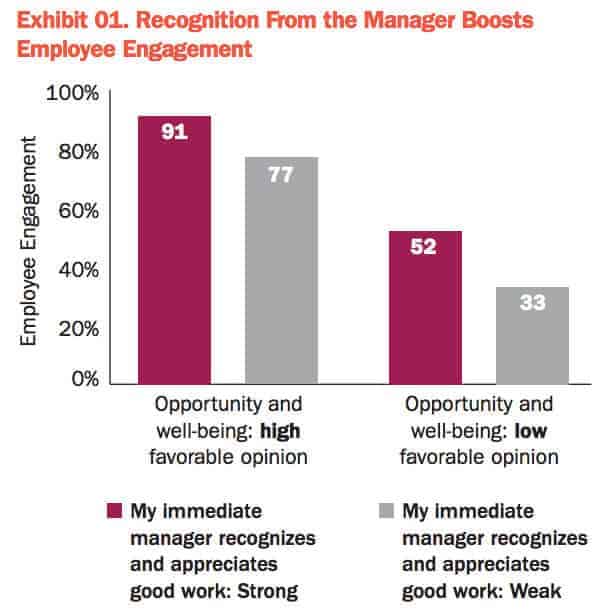
There are many ways to recognize your employees. Be creative and go beyond a standard, bland, "Good job." It can be something as simple as a quick thank you at the end of the week via email or a private message:
Friday work tip:
Before the weekend. DM one coworker who impressed you this week. Let them know.
— Mike Coutermarsh (@mscccc) October 12, 2018
It could also be something more substantial, like giving a special award to your team member that made the difference on your last project, or you could give that employee a special role on the next project.
Recognition is an important way to show your employees that you appreciate them and value their effort. However, it's about more than recognizing them; it's also about connecting with them.
There are a lot of ways to show your employees that you care.
Leadership expert and author Mark Crowley refers to this as "emotional currency” in his book, Lead from the Heart:
"You have to pay people enough money, there is no question there, but what people really need in order to be engaged is for their emotional needs to be met.”

You meet people's emotional needs at work by doing things like:
- Respecting them and their ideas
- Showing that you value their work
- Giving them meaningful work
It's about building rapport
How well do you know your employees? Do you know what each person really needs to be happy, motivated and effective?
In order to really connect with your team, and understand the kind of appreciation that will resonate most with them, you need really get to know them. You have to find out what uniquely motivates and interests each person.
In other words, it's all about building rapport.
Building rapport = relatedness = maximizing engagement
Camille Fournier, author and former CTO of Rent The Runway, says this is an important 4th element for engagement that builds on Dan Pink's original 3 elements of drive (Autonomy, Mastery, and Purpose). It's what she calls relatedness:
"Relatedness is very touchy-feely. It's hard to quantify. It requires interpersonal engagement.
…As a leader, you will lead people who want Relatedness in their job. They want you to know about their family, their hobbies. They want to chat with you about their weekend, their trips away. They want to get lunch sometimes.
The nice thing about Relatedness is that it is the easiest thing to provide. You don't have to have management buy-in to ask people about their weekends. You don't have to go through contortions to find business cases for sharing an occasional meal or coffee. And you may find that once you start caring about people, you feel a bit happier yourself at work.”
By seeking to connect with and relate to your employees, you can build rapport over time. And that shows them that you appreciate them on a deep level.
If you want to become one of the types managers who effectively appreciate and recognize their employees, read more here:
- Why You Should Build Rapport with Everyone You Manage
- 5 Ways to Give Effective Praise to Motivate Your Team
- The Ultimate Workplace Praise Guide: How to be More Positive at Work and Give More Praise to Your Team
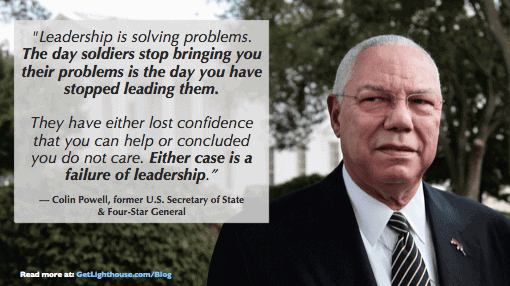
2) Managers who are open to feedback
Ever had a job where your manager never seemed to care? They assigned projects, dished out criticism, and gave orders without so much as asking what you thought about any of it?
Too many managers fail to listen. Rachel Green, Director at The Emotional Intelligence Institute in Western Australia, says that defensiveness is common among leaders.
They let their emotions get the best of them, namely pride, and lack the self-awareness necessary to recognize those emotions. And that prevents them from being open to feedback, which then keeps them from improving as a leader.
"Being able to hear feedback without becoming defensive is an essential skill for a leader, and one that reflects an emotionally intelligent leader,” says Green.
Great managers know that to build a high-performing team, you need to be open to receiving feedback. And you do that by listening to each of your team members.

You need to ask for feedback
It would be great if employees would walk right up to their managers and tell you exactly the feedback you need to hear in a friendly, approachable way. Unfortunately, we know that doesn't happen, which is one of many reasons why open-door policies fail.
To get feedback, you need to make it clear that you want feedback. As Ed Catmull, cofounder of Pixar learned, you need to ask:

While working on Toy Story, Pixar co-founder Ed Catmull had an open-door policy for feedback. The result was… crickets. But that didn't mean the team didn't have issues; they just didn't feel comfortable coming to him.
He found there were a variety of reasons why employees weren't comfortable with walking into his office at a random time to bring up problems:
- The team loved working on Toy Story and that made them feel certain issues were worth putting up with.
- Production managers, whose jobs typically only last for that project, were worried that voicing opinions might cause them to not get to work on future movies.
- Team members didn't want to be seen as complainers

Implement a system for obtaining feedback
Later, Catmull implemented more proactive processes for obtaining feedback. One such example was what Pixar calls "The Braintrust”.
The Braintrust is a group of expert storytellers who watch cuts of each movie in development. After watching a cut, they offer feedback for the team.
Importantly, the Braintrust group changes all the time.
The same people giving feedback are sometimes the ones receiving the feedback. Everyone gets used to being a critic and receiving tough, but fair feedback.
When receiving feedback, Catmull believes it's important to leave your ego at the door so team members feel safe giving feedback. His priority (and hopefully yours) is on the project and making it the best it can be, not anyone's ego:
"Any successful feedback system is built on empathy, on the idea that we are all in this together, that we understand your pain because we've experienced it ourselves.
The need to stroke one's own ego, to get the credit we feel we deserve – we strive to check those impulses at the door. The Braintrust is fueled by the idea that every note we give is in the service of a common goal: Supporting and helping each other as we try to make better movies.”
You can implement something similar by having regular one on ones with your team. Frequent one on ones with all of your team members gives you and your team a way of offering feedback that's private and focused on continuous improvement.
If you want to become one of the types managers who are great at receiving and giving feedback, read more here:
- How You Can Get More Feedback from Your Team
- 5 Awesome Ways to Give Feedback to Your Team
- How to Give Constructive Feedback to Motivate and Improve Your Team
- 3 Steps to Give Feedback: The Prepare - Listen - Act Model
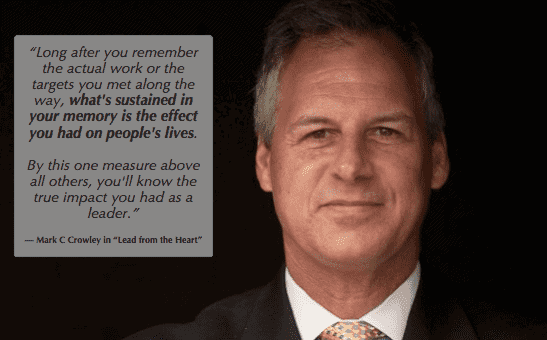
3. Managers who show they care
It's not enough just to say you care. Showing it has a power all its own that is both memorable and meaningful.
Employees love when you go out of your way to show that you care, even if it's something as small and simple as a $10 gift. It's both inexpensive and easy to do, and can make a lasting impact.
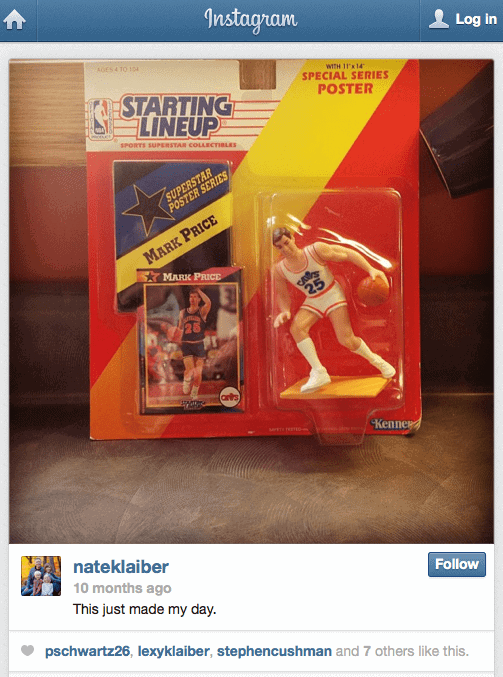
An engineer I used to work with at KISSmetrics, Nate, was a big fan of retired Cleveland Cavalier Mark Price. He had been doing amazing work and I wanted to do something to show my appreciation.
For only $10 and a few minutes of searching on eBay, I sent him something that meant enough to him that it's still sitting on Nate's desk to this day:

Imagine what he must think when he sees that every day.
Have you ever given one of your team members something that they'd remember for months or years?
Get proactive with welcome kits
First impressions matter a great deal in most situations, including at work. Welcome kits are another great way to show you care starting on their first day.
A welcome kit is as thoughtful as it gets. By taking the time to put together a kit with everything a new employee needs to get started and feel welcomed to the company and its culture, they see that you care.
Like this welcome kit from Square:

The kit includes several items to help welcome new hires to the company's culture:
- The book The Checklist Manifesto: How To Get Things Right by Atul Gawande, a favorite of CEO Jack Dorsey.
- A Starbucks gift card (for late nights, early mornings, and bonding with coworkers over coffee)
- A large card titled "The Four Corners of Square” which details the company's central values
- And several other square-shaped and themed items.
Turn a welcome kit into a rite of passage
You could also make a welcome kit into a kind of initiation at your company. With this approach, you're showing you care while also recognizing their efforts at the start.
Twilio gives this kit to new hires after they use the Twilio API to make their own app during their first week on the job:

After presenting their idea in front of colleagues at a company dinner, they're presented with a Twilio track jacket, Kindle Paperwhite, and $30 monthly book stipend to officially welcome them to the company.
Welcome kits make new hires feel like they're a part of the company from day 1. They're also a great way to introduce new hires to your company culture. (Plus, they're pretty share-worthy, too, as you can see from the pictures we found.)
If you were a new employee, what would you like your manager to start doing to say 'welcome'? If you spend just a bit of time thinking about that, it could go a long way in making your team feel happy.
If you want to become one of the types of managers who shows they care, read :
- How to make your team love you for less than $10
- 5 ways to motivate your team without breaking the bank
- How to improve your employee onboarding process to engage your hires & prevent turnover

4. Managers who invest in their employees' growth
Your employees want to grow. Several studies have shown that Millennials in particular value opportunities for growth and development more than even seemingly popular perks.
Mary Meeker's Internet Trends report, for example, found that training and development were Millennials' most valued work benefits:
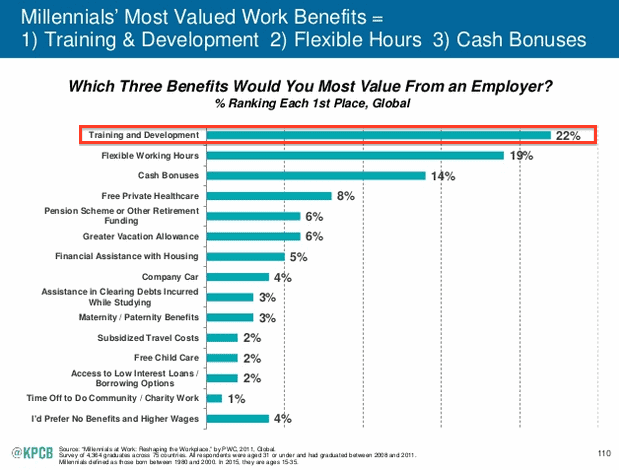
And this study from PwC on what attracts Millennials to new jobs agreed:

Across every generation, we inherently want to feel a sense of progress. When that sense of forward motion stops at work, your employees start to get bored and disengage.
What do you appreciate most about your manager? You're probably thankful for the opportunities you got to hone your skills and get to where you are today.
Your team is the same.
If you don't help your team members grow, then eventually, they will look elsewhere for the opportunity to grow and develop.
Create career development plans
One of the best ways to assure the growth of your employees is by implementing a career development plan for each person.
A career development plan helps you make sure they make regular incremental progress, and always build new skills. Planned well, it's a win-win: they add new skills keeping them engaged, and those skills make them better at their job.
If you're struggling to create a career development plan for your team, read The 3 Questions Every Manager Struggles with Making Career Development Plans.
You can also check out 6 Proven Ways To Help When Your Team Member Can't Answer "What Are Your Career Goals?"
What about when a promotion isn't possible?
One of the challenges that often comes up in conversations on employee growth is, "What do you do when promotion isn't an option?”
The most obvious growth opportunity is to build skills towards a promotion, but that isn't always possible.
Many companies today are flatter in their org charts, so there are fewer management opportunities, and some departments (like customer success or support) don't really have many levels to advance.
If promotion isn't an option for an employee (or at all), consider these options instead to offer a sense of growth and development for every member of your team:
- Lateral moves: Shifting roles or taking on new responsibilities are two ways you can offer growth for employees without promotion. Brian Halligan, co-founder and former CEO of HubSpot, talks about the value of lateral movement in his TEDx talk on "Inbound HR”. (Starting at the 8:05 mark):
- Focus on improving individual skills: There's more to growth than the position and responsibilities an employee has. You can also work with your team members to develop general skills like public speaking, learning a new development language, or managing an intern.
Whether promotions are the primary driver, or skills and personal growth are the best option, they all can help satisfy your team's desire to grow. The types of managers employees love to work for know this is a key habit and worthwhile investment to make in everyone they manage.
If you want to become one of the types of managers who invests in their employee's growth, read more here:
- How to Help Your Team Achieve Their Goals
- Employee Development: How to grow your employees when you can't promote them
- How to help when your team member can't answer "What are your career goals?”
- Who to Promote? 5 Key Qualities of a Good Leader
Which of these types of managers do you want to be? Become the best manager your team has ever had
At the end of the day, you can't control what your employees think, feel, or do.
However, you can work on becoming one of the best types of managers for them, which will influence their behavior and performance in many positive ways. Simply spend some time thinking about it - what types of managers do you work best with? Try to become one of those managers.
By doing so, your team will show their appreciation through higher engagement, productivity, and loyalty. Then, they're likely to feel better, think highly of you and their job, and do their best work.
Your actions make all the difference. By:
- Showing you appreciate your employees,
- Offering better opportunities for growth, and
- Receiving and offering constructive feedback regularly
You can become the type of manager employees love working with.

What are the four basic management styles?
There are a number of ways to categorize managers based on their leadership style. In 2000, Daniel Goleman, the author of Primal Leadership, Unleashing the Power of Emotional Intelligence, came up with a way to group leaders based on the work of renowned psychologists Douglas McGregor and Abraham Maslow.
Goleman used Maslow’s and McGregor’s work to define six management styles (the first two being more manager-centric and the four following ones team-centric)
- Autocratic - a style where the manager makes all the decisions and rarely invites people to challenge them or bring constructive feedback to the table.
- Pacesetting - the pacesetting leader raises the bar for their team in terms of their performance and holds them accountable to it, replacing them if they underperform.
- Democratic - these leaders are also called consultative, or participative, and encourage people to express their opinion and participate in decision-making.
- Visionary - visionary leaders use a common, usually ambitious goal to motivate their teams. Instead of using fear, they motivate people by showing them how they fit in with the company’s strategy.
- Coaching - the coaching management style focuses on people’s professional development as the primary objective and nurtures autonomy and independence.
- Affiliative - this style focuses on building inner-team rapport, conflict resolution, and working on soft skills. It nurtures a culture of positive feedback and freedom of expression.
- Laissez-faire* - “laissez-faire” means “let do” in French. These leaders give team members full autonomy to do what they want with very little interference. (*this style isn’t included in Goleman’s book but is often seen among startup leaders; it’s a term first introduced by American psychologist Kurt Lewin).




